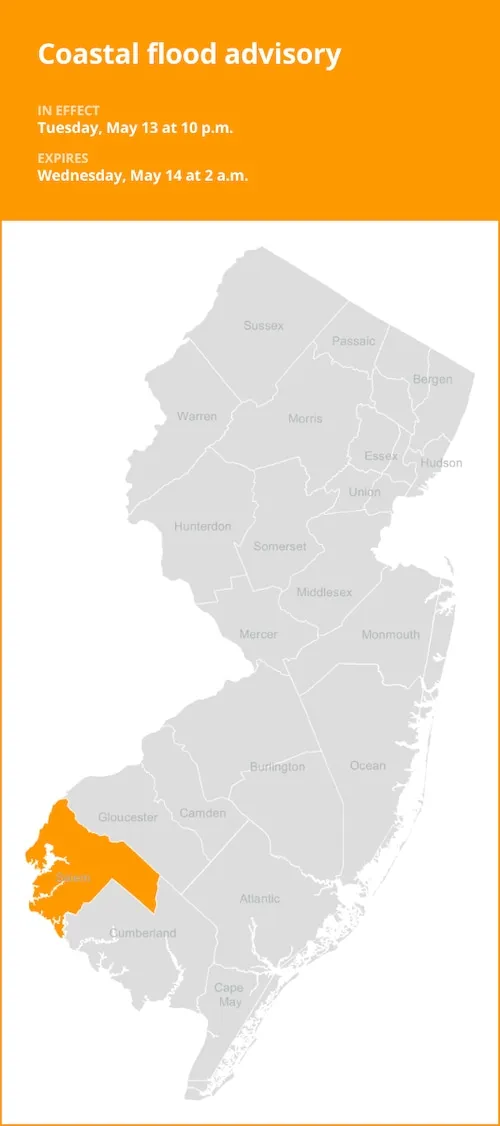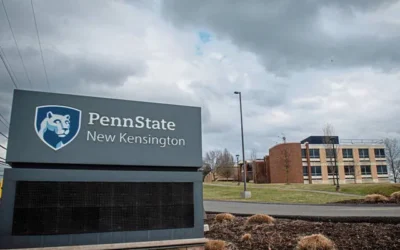Understanding the Impact of Coastal Flood Advisories
As coastal communities brace for potential flooding, several areas in the Northeastern United States—a region annually challenged by violent weather patterns—have been placed under coastal flood advisories. The latest advisory updates emphasize the urgent need for awareness and preparedness among residents and local authorities alike.
Current Advisories: A Closer Look
The coastal flood advisory for Salem County remains in effect until 2 a.m. on Wednesday, providing local forecasters with the opportunity to monitor conditions closely as tide levels fluctuate. This advisory comes as a precursor to the anticipated higher winds and rainfall across the region. Additionally, Bristol and Plymouth counties will experience a similar advisory on Thursday, prompting expectations of coastal inundation during high tide.
What Does a Coastal Flood Advisory Mean?
A coastal flood advisory serves as a notification to residents about the potential for minor flooding conditions. These advisories are particularly critical for low-lying areas where infrastructure is at risk. Local emergency services and community organizations often utilize these advisories as a foundation for disruption and risk mitigation strategies. As sea levels rise and extreme weather becomes more frequent, understanding the significance of these notifications is paramount.
The Importance of Preparedness
Coastal flooding can have profound effects on communities, impacting everything from individual homes to public infrastructure, such as roads, bridges, and sanitation systems. In this light, preparedness should be a community-wide focus. Here are several proactive steps residents can take:
- Stay Informed: Residents should remain updated through local news sources, social media channels, and emergency notifications. Information from websites like the National Weather Service (NWS) can provide real-time updates about changing conditions.
- Know Your Evacuation Routes: Residents living in flood-prone areas should familiarize themselves with evacuation routes and have a plan in case of an emergency. It is essential to understand how to access higher ground safely.
- Prepare an Emergency Kit: Essential supplies such as water, non-perishable food, medications, batteries, and flashlights should be readily available. Residents should also include important documents in their emergency kits.
- Protect Your Property: Put flood barriers in place—such as sandbags—and elevate appliances to minimize damage in the event of flooding.
Local Efforts During Advisory Periods
As communities rally around the need for preparation and immediate response, local governments play a critical role in managing the impacts of coastal flooding. Officials often collaborate with agencies like the Federal Emergency Management Agency (FEMA) and the National Oceanic and Atmospheric Administration (NOAA) to coordinate response efforts. Understanding where resources are allocated can ensure that communities remain resilient in the face of climate challenges.
A Focus on Salem County
For residents of Salem County, the above advisories serve not only as warnings but also as reminders of the area’s vulnerability to severe flooding. Local authorities have consistently worked to devise plans that mitigate flooding while also improving readiness for future unpredictable weather patterns. As one of New Jersey’s most flood-prone regions, proactive measures have become increasingly critical.
The Alexandria Waterfront Commission’s $145M Flooding Project
In light of the ongoing challenges presented by coastal flooding, the Alexandria Waterfront Commission will hold a meeting on Tuesday to discuss a groundbreaking $145 million flooding project. This initiative represents a significant investment aimed at enhancing the community’s flood resilience. If approved, this project is designed to address long-standing issues that have placed Alexandria residents at risk during high tide events.
Project Goals and Community Impact
The $145 million project aims to significantly reduce flooding risks in the Alexandria area by implementing sustainable infrastructure solutions. These solutions may include:
- Improved Drainage Systems: Enhanced drainage systems are vital for effective water management during rain events, ensuring that excess water is redirected efficiently.
- Flood Barriers: Installing or improving existing flood barriers can create a first line of defense against sea-level rise and storm surges.
- Community Engagement: Involving residents in the discussion not only builds a sense of community but also ensures that the voices of those most affected by flooding are heard in project planning.
The outcome of this meeting could significantly influence how Alexandria tackles its response to flooding issues moving forward. Citizens are encouraged to participate actively and voice their concerns, reinforcing the importance of community input in shaping flood management strategies.
The Broader Picture: Climate Change and Flooding
The increased frequency and intensity of flooding events can largely be attributed to climate change, underscoring the urgency for lasting solutions. As global sea levels rise, coastal communities are increasingly confronted with the risks of inundation. In addition to immediate measures like advisories and infrastructure improvements, long-term strategies addressing climate-related challenges must be prioritized.
What Role Do Local Governments Play?
Local governments serve as a buffer between residents and the wider implications of climate change, allowing communities to adapt and remain informed. However, the effectiveness of these efforts depends on adequate funding, resources, and public engagement. Collaborative initiatives that strengthen partnerships between local governments, non-profits, and residents are essential to developing comprehensive flood management strategies.
Preparing for the Future
The current coastal flood advisories for Salem County and surrounding regions should serve as a call to action. By taking the threats posed by flooding seriously, residents can work alongside local authorities to construct a more resilient future. Improving flood management infrastructure while educating communities on the risks and safety measures can dramatically reduce vulnerability.
The journey toward sustainable flood management may be long, but it begins with each step taken by every individual and community member. From preparedness to advocacy for larger infrastructural projects, every proactive move is a contribution toward creating a robust and flood-resilient community.
Conclusion
As New Jersey and neighboring regions brace for potential coastal flooding, the importance of staying informed and prepared cannot be overstated. Residents must take heed of advisories and leverage local meetings to discuss strategies and resources to face these imminent threats effectively. In an uncertain climate future, community collaboration fosters not only resilience but also the strength necessary to adapt and survive against nature’s vulnerabilities.







